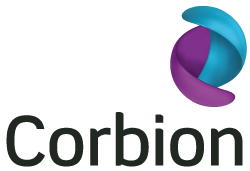12
Feb
2025


Every bakery wants to reduce waste. It’s expensive, it’s inefficient, and it leads to excess greenhouse gas emissions, undermining your company’s sustainability and environmental responsibility goals.
Most wholesale bakeries — roughly 83% — have at least some form of waste reduction program in operation (1), but what’s good can always be made better. A periodic waste reduction plan overhaul will not only help you fine-tune the program you already have in place, but bring in new thinking to an initiative that might have grown stale over time.
 Source: Corbion
Source: CorbionAn outside perspective can be invaluable, and no one knows better how to spot inefficiencies in the production cycle than your ingredients supplier. From the mixing bowl to the production line to the shelf, an ingredient expert can help optimize your formula for maximum success: reduce waste, improve sustainability, cut costs, boost profitability, and meet consumer demands for longer-lasting products.
A good waste reduction program takes every step of the production process into consideration —even storage. Start your program overhaul in the storage room by taking a close look at your ingredient intake, inventorying, and rotation processes as well as things like temperature and humidity controls.
Next step: the formula. Simpler formulas mean reduced ingredient handling time, fewer measurement errors, and quicker, easier mixing. Are there any ingredients that can be eliminated? Remember that every ingredient you can cut not only brings down ingredient costs but storage and ingredient management costs as well.
Next, production. What opportunities exist to streamline processes and minimize downtime? This is where dough conditioners and strengtheners can have a huge impact. Dough conditioners not only improve dough handling and processing, but they also increase consistency. The result: fewer production halts and reduced downtime.
An added benefit of dough conditioners is increased dough tolerance, which helps maintain consistency even in the face of temperature and humidity fluctuations. That means fewer equipment recalibrations and speedier, more efficient operations.
Did you know the bread and bakery sector generated 1.75 million tons of food waste in 2022 (2)? Much of that was due to product molding or staling on the shelf. The good news is that there are a variety of innovative formulation solutions available to improve finished product quality, extend shelf life, and prevent waste of the final product.
The cost savings benefits of extended shelf life are clear, however, there are added benefits, not only in terms of sustainability but in consumer esteem. When surveyed, 53% of consumers reported feelings of guilt over throwing away bread at home (3). No surprise then that a full 62% of consumers said that a “longer shelf life" claim was very important to them when considering a purchase (3).
 Source: Corbion
Source: CorbionWhichever step in the production process you decide to focus on, collaboration between you and your ingredient supplier is critical to success.
The stakes are high. Some 43% of food waste comes from America’s homes (4). In the U.S., food waste is estimated at between 30-40 percent of the total food supply (5). Wasted food represents roughly 10% of global greenhouse gas emissions, which is nearly four times greater than that of the global airline industry (6).
Combatting these problems means working together to create a more efficient, less wasteful, cleaner and more sustainable future. Talk to your ingredients supplier to explore the many innovative solutions that are available to help you optimize your waste reduction program and meet your efficiency, product quality, and profitability goals.
A wholesale bakery in the Midwest was experiencing dough strength issues, particularly with their dinner roll product. The height, volume and crumb problems that resulted were being noticed by their customers, particularly by their largest customer, a regional grocery retailer.
The bakery turned to Corbion’s technical services team for an ingredient solution that would improve the product’s performance. Together with bakery staff, the team conducted a full formula analysis, evaluating each ingredient for its functionality and contribution to dough quality, shelf life, and other key product attributes.
Ultimately the team concluded that a successful, appealing product could be produced without several current ingredients. An enhanced, yet simplified, formula was created, and the production line was optimized to accommodate it. After a series of water level and mixing speed/time adjustments were made, test runs were conducted.
The updated product was a vastly improved, more consistent, more resilient version of the dinner roll that the bakery then put into production.
(1) 2023 Industry Research Findings: Sustainability Commitment in U.S. Wholesale Baking, Cypress Research
(3) Proprietary Corbion Bakery Research, Pulse Survey, Q3 2023
(4) Food and agriculture Organization) FoodWaste_Guide.pdf
(5) USDA
(6) World Wildlife Fund: Reducing Food Waste is Imperative: Solutions for Food Loss (worldwildlife.org)
| Sign up for our free newsletters From breaking news to R&D insights, we’ll send you the top stories affecting the industry. |
Subscribe |





Food brands turn to fashion for innovative partnerships.